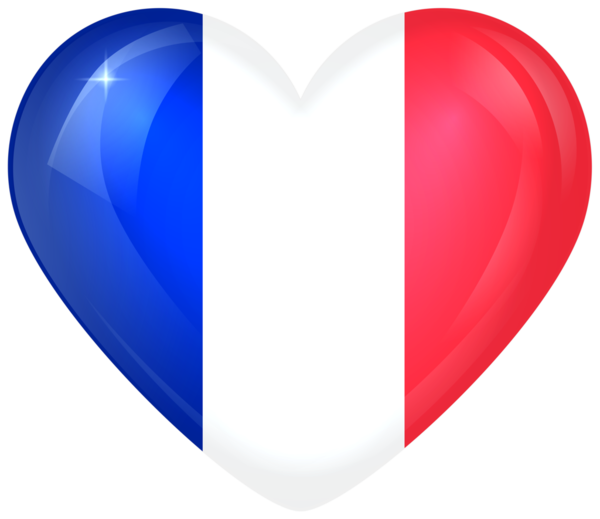
Prepositions of Place in French
August 1, 2024
Mastering Yes/No Questions in French Grammar A1
August 11, 2024Using “Il y a” in French: A Comprehensive Guide for Beginners
“Il y a” is a fundamental phrase in French that every beginner must learn. It is equivalent to “there is” or “there are” in English and is used to indicate the existence or presence of something. This article will provide a detailed explanation of how to use “Il y a,” its various applications, and numerous examples to help you master this essential French construction.
What Does “Il y a” Mean?
“Il y a” literally translates to “there is” or “there are.” It is used to state the presence or existence of one or more things. This phrase is incredibly versatile and can be used in various contexts, from describing locations to talking about quantities and durations.
Structure of “Il y a”
The structure of “Il y a” is straightforward:
- Il: This is the impersonal subject pronoun “it.”
- y: This is an adverb meaning “there.”
- a: This is the third-person singular form of the verb “avoir” (to have).
When combined, “il y a” translates to “there is” or “there are.”
Usage of “Il y a”
- To Indicate Existence
“Il y a” is most commonly used to indicate the presence or existence of something.
- Examples:
- Il y a un chat dans le jardin. (There is a cat in the garden.)
- Il y a des livres sur la table. (There are books on the table.)
- To Describe Locations
“Il y a” can also be used to describe what can be found in a specific location.
- Examples:
- Il y a une pharmacie près de chez moi. (There is a pharmacy near my house.)
- Il y a un parc à côté de l’école. (There is a park next to the school.)
- To Talk About Quantities
You can use “Il y a” to talk about the quantity of items present.
- Examples:
- Il y a beaucoup de monde à la fête. (There are many people at the party.)
- Il y a trois pommes dans le panier. (There are three apples in the basket.)
- To Express Time
“Il y a” is also used to express time in the sense of “ago.”
- Examples:
- Il y a deux heures, il pleuvait. (Two hours ago, it was raining.)
- Il y a trois jours, j’ai rencontré Marie. (Three days ago, I met Marie.)
Negative Form
To make “Il y a” negative, you simply wrap “ne” and “pas” around it, forming “Il n’y a pas.”
- Examples:
- Il n’y a pas de café dans la tasse. (There is no coffee in the cup.)
- Il n’y a pas de problème. (There is no problem.)
Questions with “Il y a”
To form a question with “Il y a,” invert the subject pronoun and verb, or use “est-ce qu’il y a.”
- Examples:
- Y a-t-il un médecin ici? (Is there a doctor here?)
- Est-ce qu’il y a une boulangerie près d’ici? (Is there a bakery nearby?)
Examples in Sentences
Here are some sentences that demonstrate the various uses of “Il y a”:
- Indicating Existence:
- Il y a un chat sur le toit. (There is a cat on the roof.)
- Il y a des enfants dans le parc. (There are children in the park.)
- Describing Locations:
- Il y a un restaurant italien dans ma rue. (There is an Italian restaurant on my street.)
- Il y a une banque à côté de la poste. (There is a bank next to the post office.)
- Talking About Quantities:
- Il y a plusieurs options disponibles. (There are several options available.)
- Il y a deux chiens dans le jardin. (There are two dogs in the garden.)
- Expressing Time:
- Il y a cinq minutes, il a téléphoné. (He called five minutes ago.)
- Il y a un an, nous avons visité Paris. (A year ago, we visited Paris.)
- Negative Form:
- Il n’y a pas de voiture dans le garage. (There is no car in the garage.)
- Il n’y a pas de réponse correcte. (There is no correct answer.)
- Questions:
- Y a-t-il un hôpital près d’ici? (Is there a hospital nearby?)
- Est-ce qu’il y a des questions? (Are there any questions?)
Practice Exercises
Here are some exercises to help you practice using “Il y a”:
- Fill in the blanks with the correct form of “Il y a”:
- _ un chat dans le jardin. (There is a cat in the garden.)
- _ des livres sur la table. (There are books on the table.)
- _ une pharmacie près de chez moi. (There is a pharmacy near my house.)
- _ beaucoup de monde à la fête. (There are many people at the party.) Answers:
- Il y a un chat dans le jardin.
- Il y a des livres sur la table.
- Il y a une pharmacie près de chez moi.
- Il y a beaucoup de monde à la fête.
- Form negative sentences using “Il n’y a pas”:
- _ de café dans la tasse. (There is no coffee in the cup.)
- _ de problème. (There is no problem.)
- _ de voitures dans le garage. (There are no cars in the garage.)
- _ de réponse correcte. (There is no correct answer.) Answers:
- Il n’y a pas de café dans la tasse.
- Il n’y a pas de problème.
- Il n’y a pas de voitures dans le garage.
- Il n’y a pas de réponse correcte.
- Convert the following statements into questions using “Y a-t-il” or “Est-ce qu’il y a”:
- Il y a un médecin ici.
- Il y a une boulangerie près d’ici.
- Il y a des enfants dans le parc.
- Il y a des options disponibles. Answers:
- Y a-t-il un médecin ici?
- Est-ce qu’il y a une boulangerie près d’ici?
- Y a-t-il des enfants dans le parc?
- Est-ce qu’il y a des options disponibles?
Common Mistakes and Tips
- Incorrect Agreement: Remember, “Il y a” does not change with the number or gender of the nouns that follow it.
- Incorrect: Il y a une fille et un garçons.
- Correct: Il y a une fille et des garçons.
- Using the Right Articles: Ensure that the articles match the noun in gender and number.
- Incorrect: Il y a une livres sur la table.
- Correct: Il y a des livres sur la table.
- Time Expressions: When using “Il y a” to express time, make sure to follow it with a time expression.
- Incorrect: Il y a longtemps, nous avons visité Paris.
- Correct: Il y a un an, nous avons visité Paris.
Conclusion
Mastering “Il y a” is a crucial step for beginners learning French. This versatile phrase is used in many contexts, from indicating the existence of objects to expressing time and quantities. By understanding its structure and practicing with various examples, you can effectively incorporate “Il y a” into your French vocabulary. Remember to practice regularly and pay attention to the context in which “Il y a” is used. Bonne chance (good luck) on your journey to mastering French!

